|
|
Post by cabintom on Sept 2, 2015 12:15:51 GMT
Well, my access to internet doesn't seem like it will be as good/fast/reliable as it used to be, so I'm not sure that I'll be able to post as often as I'd like. Regardless, I'm starting this thread so that when I have the chance, I'll have a place to post pictures and write up short stories about the adventures I'm sure I'll have these next few years. Hopefully you'll all enjoy this somewhat.
|
|
|
|
Post by Paul K on Sept 2, 2015 12:48:17 GMT
We are all with you there Tom .
Good luck with your adventure and keep us updated .
ICF friends
|
|
|
|
Post by cabintom on Sept 2, 2015 12:53:29 GMT
To start, I am in currently living in Beni, North Kivu, for the next few months, with the primary goal of learning proper Congo Swahili (which is quite a different beast than proper Swahilil). Unfortunately, there are major security concerns for much of the surrounding area. We drove through a few large villages on the way down from Bunia that were absolutely deserted... which is incredibly eerie in Africa where people are usually everywhere. All this to say that I may not get to do much hunting in primary forest...  Though I did visit with Robert Ducarme a few days ago and he suggested that he may be able to organize a trip out with one of his collectors who really knows the area. While here, I'm living with a Congolese family who have kindly allowed my wife and I to take over part of their home. We're quite near downtown, so the variety of butterflies flying around their garden have been lacking in both variety and number. Most commonly sited have been Zizeeria knysna, Appias epaphia and Catopsilia florella (hardly exciting), though I have caught a couple Euphaedra (which I was surprised to see) and a couple Vanessa abyssinica (which were a first for me). Our host, Safari, is a local business man who earns his living through a web of different business ventures (so far I've learned that he owns a small school supplies store, sells clothes in bulk, produces palm oil, cocoa beans, bananas, and pineapples). Yesterday afternoon, he took us to visit his palm & cocoa plantation (all the while insisting that I bring my net along). Now I realize that there are far fewer species to be found in an agricultural plot, than there would be in the forest proper, but after having sat in an urban garden (largely composed of manioc plants) for a week, the place felt like heaven. I had low expectations of what I would find, so it was great to see quite a number of Acraea species flying around, as well as Papilio ( dardanus, demodocus, zenobia), a few Euphaedra, etc. etc. In a few hours of diminishing sunlight, and with a rainstorm looming, I did fairly decent collecting there with highlights being: Euxanthe eurinome (my first Euxanthe capture! What a beautiful species...) Cynandra opis (male, which from a certain angle is a dull charcoal black, and from another a brilliantly deep electric blue) Acraea alcinoe (I think it's stunning.) Abisara sp. (I think it may be neavei... at any rate Riodinidae are neat to find here.) Location: 00°31'N 29°26'E I'm hoping to go back a number of times... hopefully next time with bait and traps. Tom |
|
|
|
Post by mygos on Sept 2, 2015 20:27:48 GMT
Hi Tom, Glad you made it with Robert as he knows the region  Look forward to see what you will collect there ... A+, Michel |
|
|
|
Post by cabintom on Dec 13, 2015 21:36:11 GMT
Lubowa, Uganda : June/July 2015
Now that I'm back and mostly settled at home in Bunia, I've finally got new specimens coming off the boards and can once again begin reporting on what I've been finding.
Back at the end of June / beginning of July I was "stuck" in Lubowa, Uganda for a couple of weeks. Lubowa is on the southern outskirts of Kampala, and only a couple of kilometres from the shores of Lake Victoria. I was staying at an inn which my organization runs, so between meetings, trainings and other work related activities I had the chance to do a bit of exploring and hunting. Additionally, the neighbourhood is fairly upscale for Kampala, so people have big properties and lovely gardens (the inn being no exception) which means that not all of the butterfly species have been pushed out. Furthermore, it's just a stone's throw away from large swaths of undeveloped land.
On days with planned work events, I hunted around the inn's gardens and had fairly good success with the trap I set-up. On my free days I'd hike down and then up to the top of a nearby hill (altitude 1300m... Lake Victoria is at 1100m), where there was some incredible hill-topping going on.
The small hilltop used to be mostly "forested" (a fair number of trees, and lots of tall, thick bushes), and a number of homeless folk (apparently rumored to have been witches) lived there. Unfortunately, in the past year almost all of that bush has since been cleared away and there are only remnants of people's camps. In terms of collecting butterflies, the main and perhaps only positive was that there were only a handful of ideal perch sites which seemed to concentrate the activity of the insects and also almost guaranteed that when I missed a particular specimen (typically Charaxes) it would be back within a number of minutes.
Sorry, I'm still getting used to using my new GoPro (low-end model without a viewfinder) so it's not the greatest video. I hope you can see the plethora of Belenois creona severina which were congregating at the top of the hill.
Actually, this particular spot, which isn't quite at the top of the hill was great for Charaxes viola picta. All the other Charaxes where firmly patrolling the top of the hill, but it seemed this species preferred being slightly down slope.
|
|
|
|
Post by cabintom on Dec 13, 2015 21:54:20 GMT
Lubowa, Uganda : June/July 2015Here are a few pictures taken at the location: The view north: 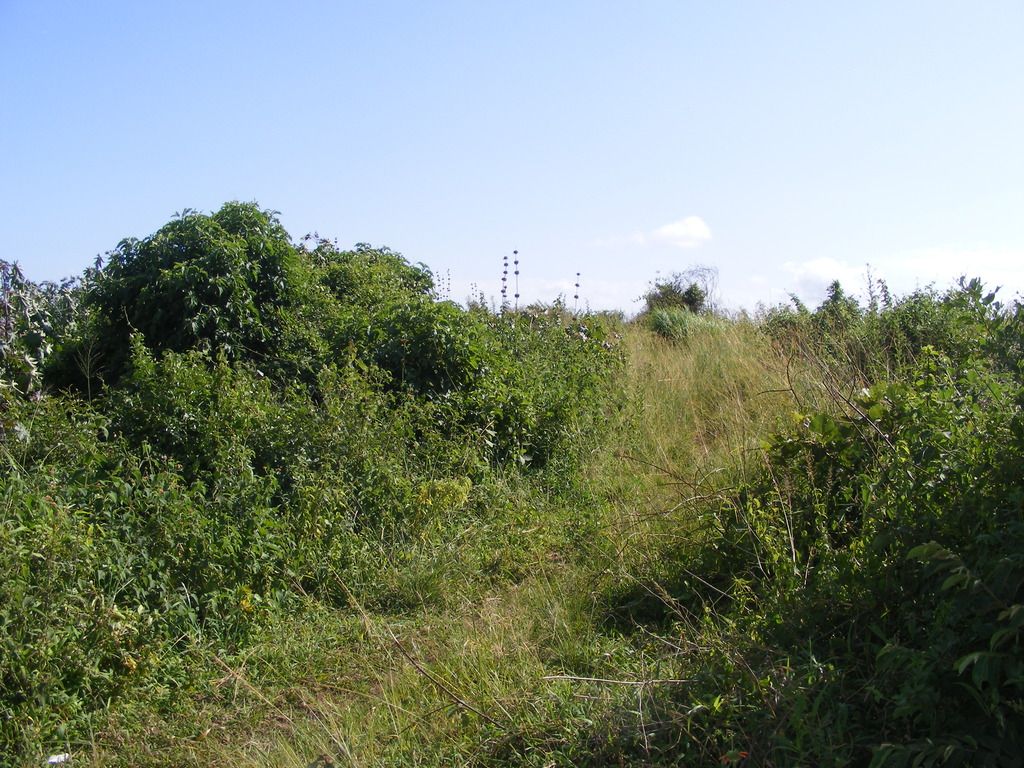 (The tall bush at the top of the picture, to the right of center is probably about 15ft tall, and was the favourite perching site for male Charaxes. I found C. etesipe, C. brutus, C. lactetinctus, C. varanes, and... I feel like I'm forgetting a species... at this spot. Graphium leonidas and a few Acraea also seemed to prefer the site. Unfortunately, thorny vines made swinging my net and navigating a bit difficult. Papilio nireus often appeared quickly flying around the large bushes on the left of the image.) The view to the east: 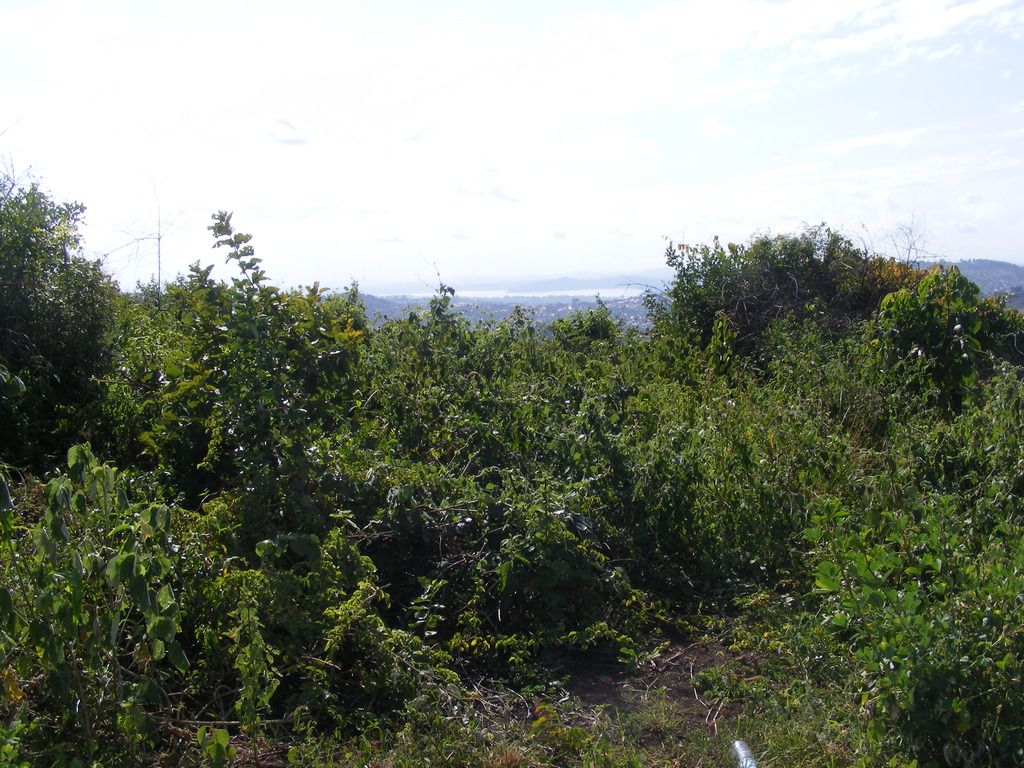 (You can see that this isn't all that far from the urban development.) The view south: 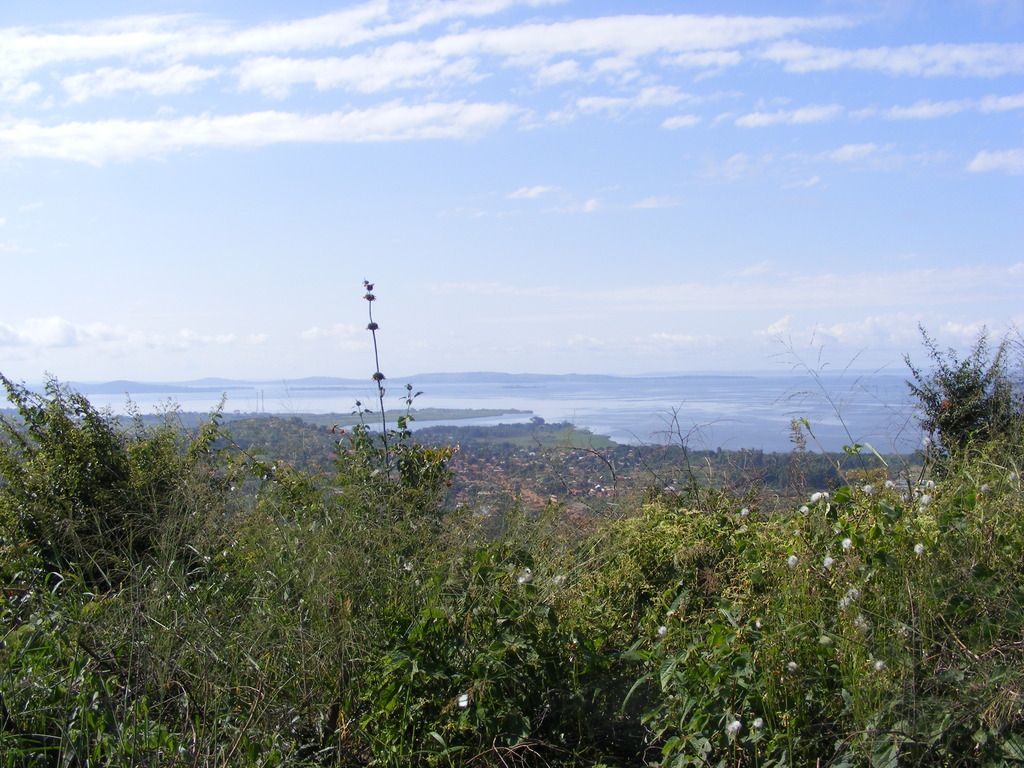 (Lake Victoria. This view and the butterflies made the suffering through the intense sun more than worthwhile.) The view south-west: 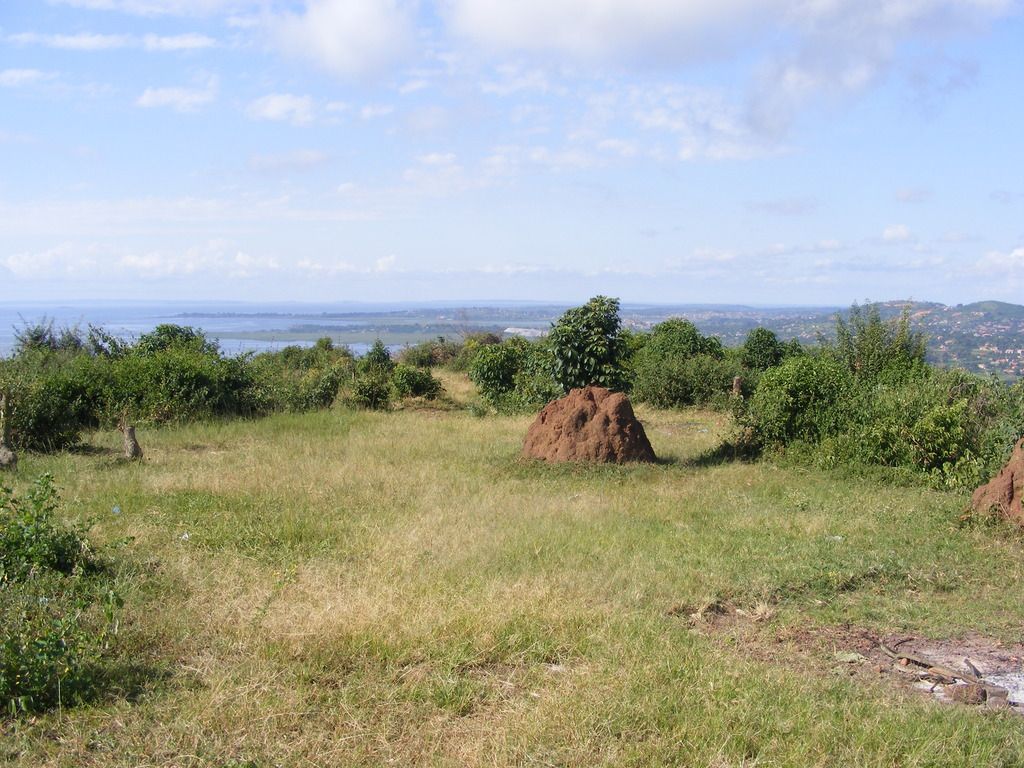 (Entebbe, the former Ugandan capital, is somewhere not far down that way.)
|
|
|
|
Post by cabintom on Dec 13, 2015 22:22:51 GMT
Lubowa, Uganda : June/July 2015Here are some of the first specimens to come off the boards. You'll notice I've changed my photography method. It's still not the best, (I probably need a camera with a ring flash) but it allows me to easily cut out the back ground and do slight white balance corrections. My one complaint is that the way I'm lighting the specimens seems to make the lighter coloured ones (esp. white/yellow) "glow" a bit. Anyways... Charaxes viola picta (2 males and a female, the males where found in the location previously mentioned while the female was found at the bottom of the same hill.)  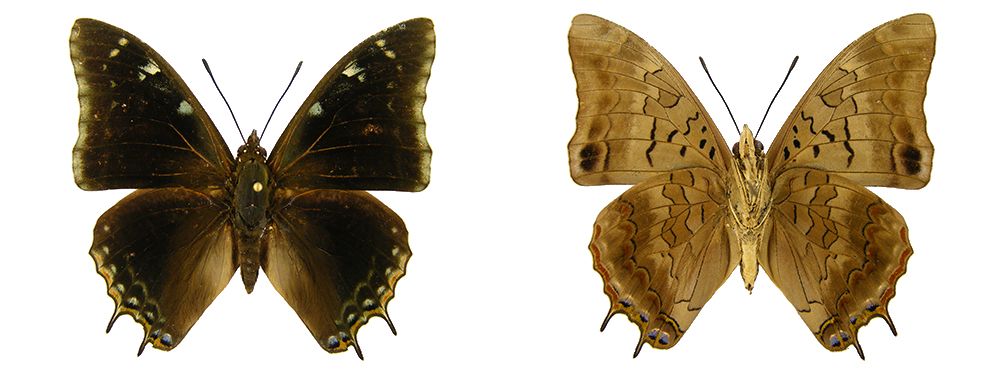  Charaxes candiope Charaxes candiope (Female, this species absolutely loves to hangout in banana-baited traps.)  Danaus chrysippus Danaus chrysippus form alcippus (female) 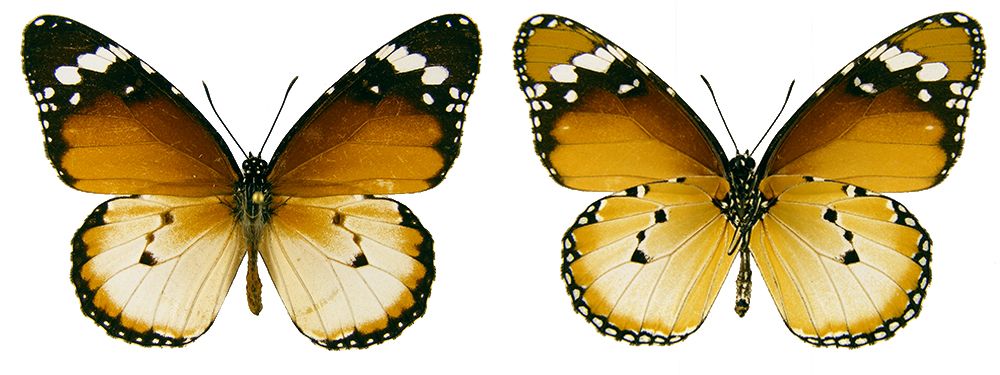 Precis pelarga Precis pelarga (I believe this would be considered to be the "wet season" form. All I've found around Bunia is the dry season form, which has more falcate forewings, and a much more leaf like underside.) 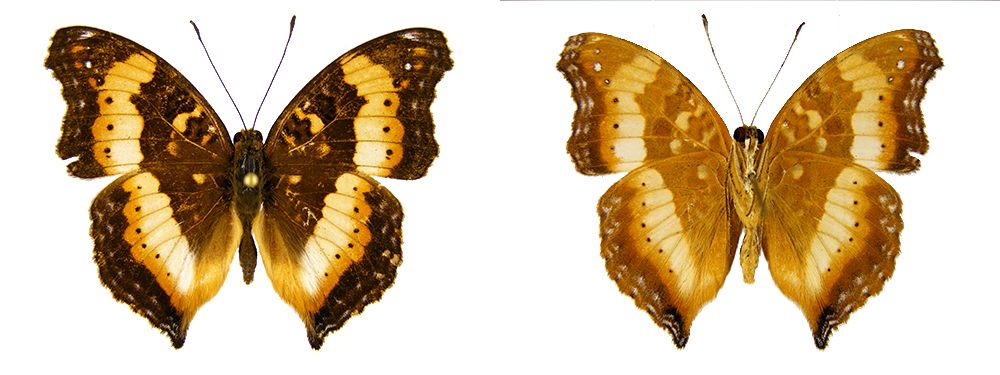 Eurema brigitta Eurema brigitta (male)  Eurema floricola leonis Eurema floricola leonis (male, not my best job at setting...) 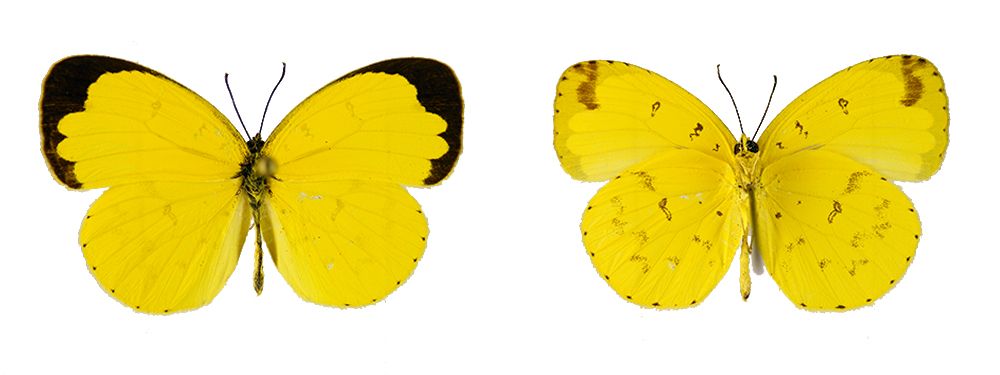 Belenois creona severina (2 males, these 2 specimens give a good feel for the range of variability in the sex. Females vary quite a bit more.) 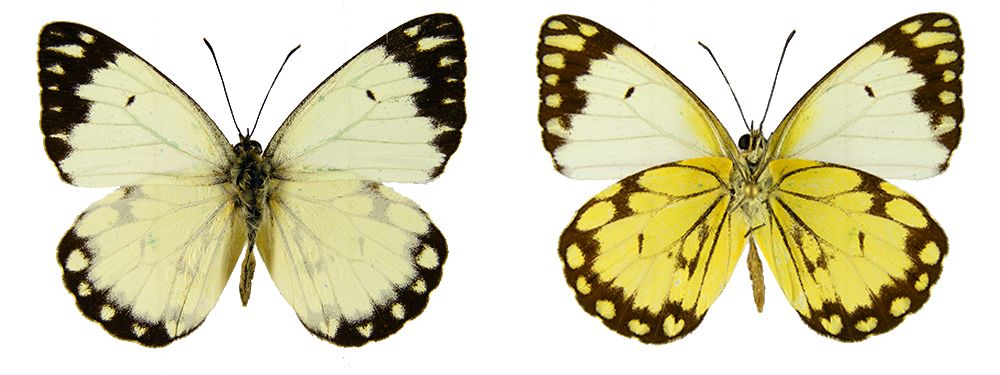 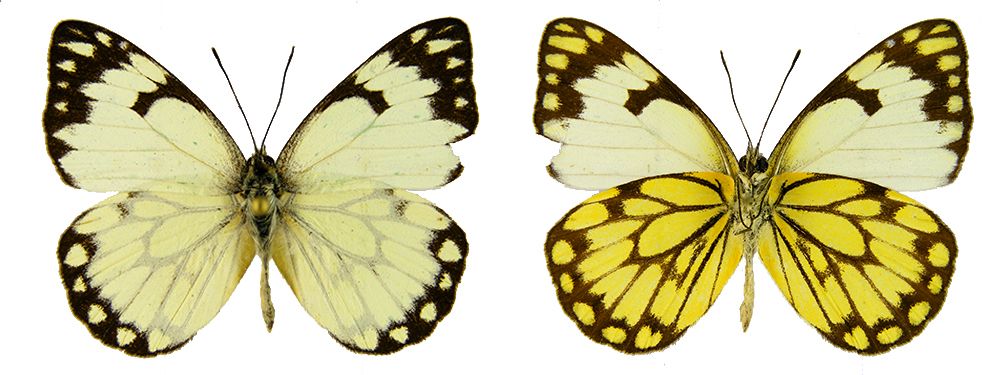 Deudorix antalus Deudorix antalus (male, these guys like to perch at the top of bushes / small trees.) 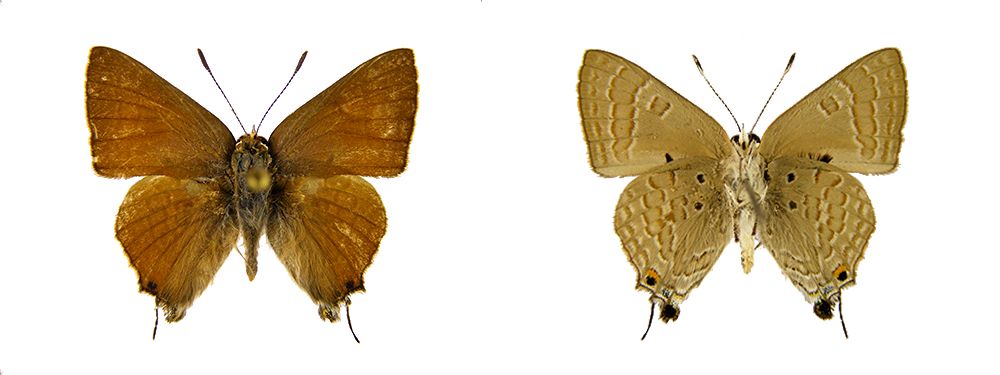
|
|
|
|
Post by nomihoudai on Dec 13, 2015 22:28:55 GMT
Wow! Your photography has improved. I am a fan of on-white photography and these are very good! The glow is normal, there is not too much you can do about it I think. For very light specimen I used to put a black piece of cardboard right next to the wings so that it will cast a small shadow onto the wing, it improves the quality a little bit. Great pictures.
|
|
|
|
Post by trehopr1 on Dec 13, 2015 23:59:03 GMT
Really nice pictures Cabintom ! And your specimens are mighty nice examples to be proud of. It certainly takes time and considerable trial and error to get good with photography. I think you have surpassed that daunting obstacle....
|
|
|
|
Post by cabintom on Dec 14, 2015 8:00:09 GMT
Just for clarity's sake, I'm taking the photos against a white background, but due to lighting imperfections (and perhaps because my camera isn't great?) it comes out off-white, so I do a simple white-balance in Photoshop, and then, for a nicer presentation, cut out the background. Here's an example of what a specimen photo looks like after I complete the white-balance in Photoshop: 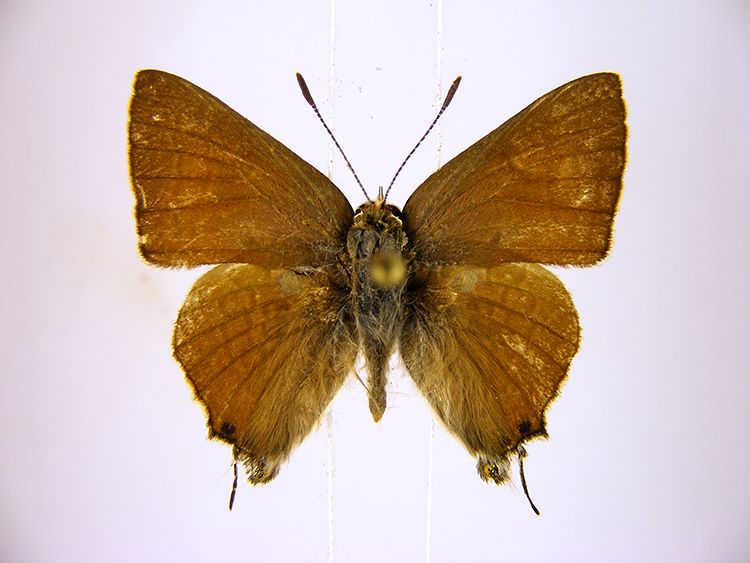 It seems like this process ends with fairly accurate colours and for better specimen to specimen photographic comparison. What I'm really lacking is a camera stand set-up, which means that sometimes my angle is a bit off and the wing shape is a bit distorted. |
|
|
|
Post by cabintom on Dec 14, 2015 9:20:25 GMT
Lubowa, Uganda : June/July 2015Here's a couple of male Papilio nireus lyaeus:  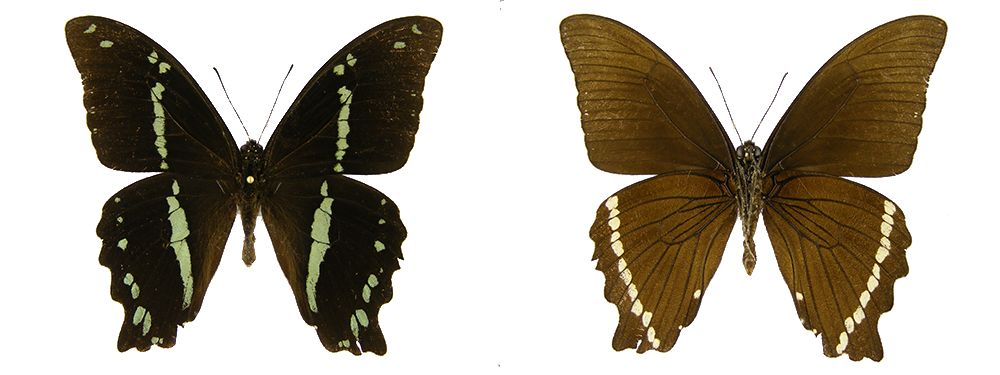 And a comparison between this subspecies and the nominate which is found in the forest near here: 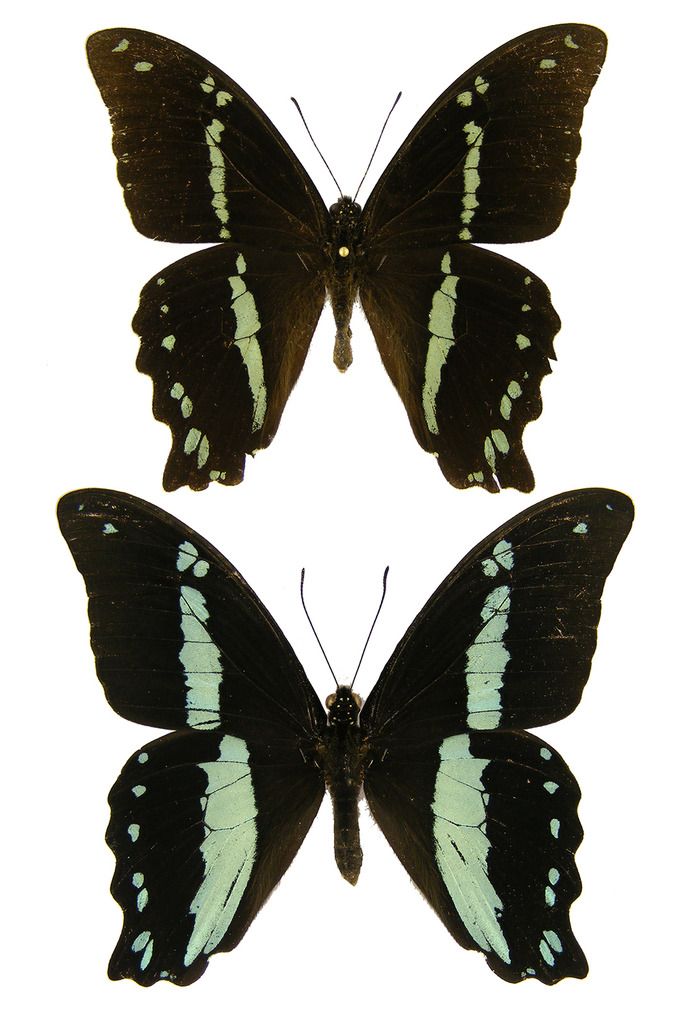
|
|
|
|
Post by cabintom on Dec 14, 2015 9:45:31 GMT
Lubowa, Uganda : June/July 2015Hmm... I'm noticing I'm still leaving fragments of the backgrounds around the edges of the images. I'll need to do a better job cleaning those up. Anyways, here's a few specimens caught in and around the inn's garden: Telchinia alicia (male) 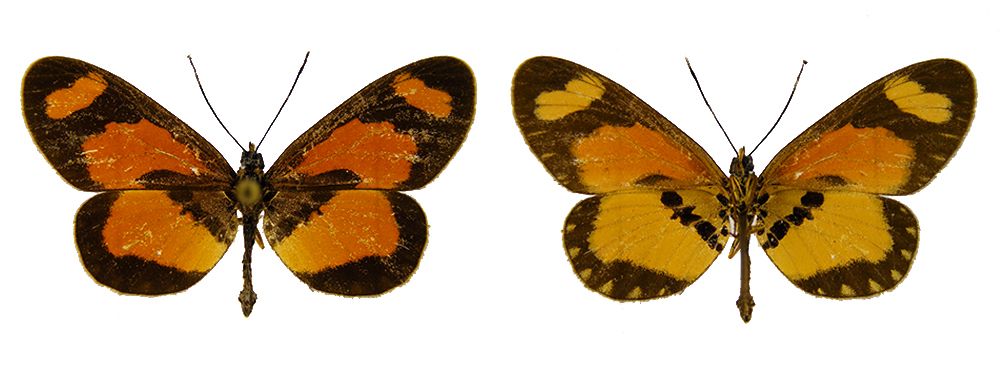 Graphium leonidas Graphium leonidas (female, caught flying around a tall tree. I'm glad for my extendable net handle, as I'd only ever caught males up to that point. Unfortunately, I must have had a problem while it sat in papered in storage. I think it got crushed a little, though I'm not certain, and the wings on the left side became incredibly loose, almost detached even. I had to fix them in place with a bit of glue.) 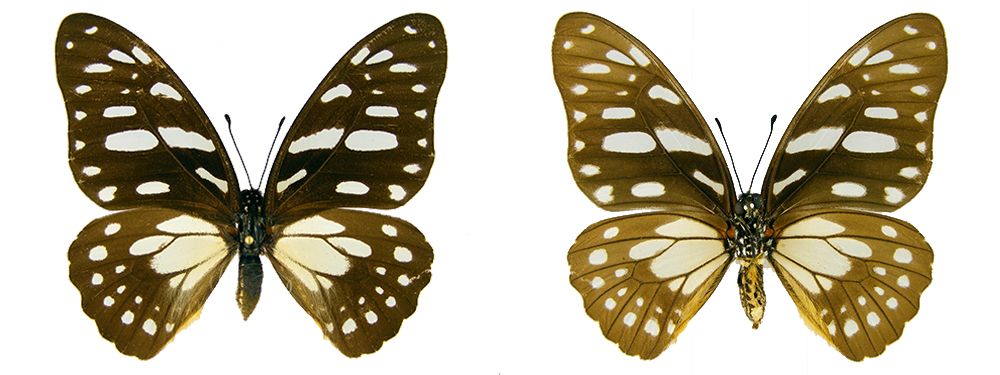 A tiny unidentified moth: 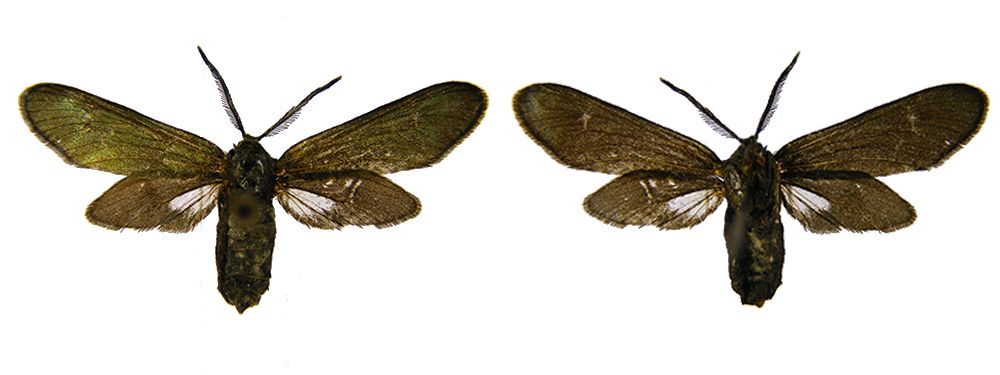 An unidentified Lachnocnema sp. (male, this guy was repeatedly visiting the insects pictured in the photo below.) 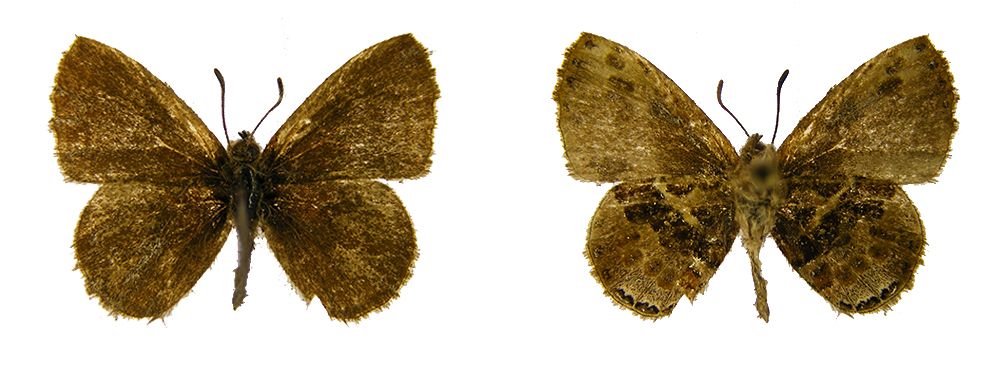 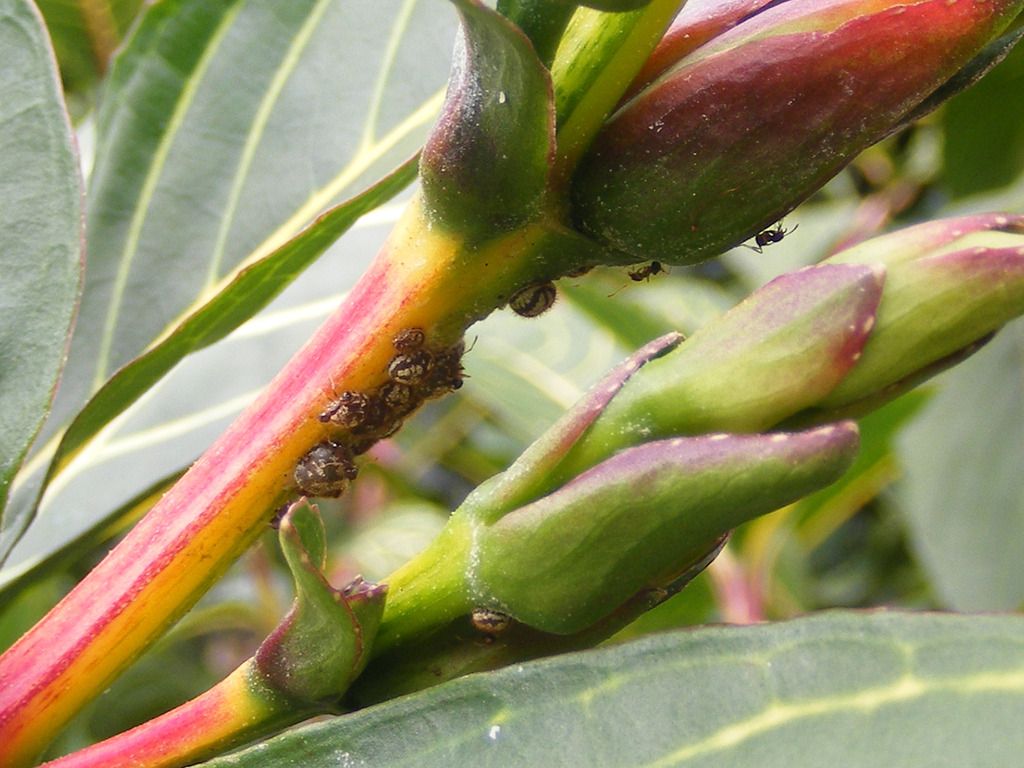
|
|
|
|
Post by africaone on Dec 14, 2015 13:31:11 GMT
the larva of Lachnocnema feeds probably on these Homopterna larvas attended by the small ants (seem to be Pheidole sp)(I bred some species of Lachnocnema in Cameroun)
what it the wings lenghth and sex ?
|
|
|
|
Post by cabintom on Dec 14, 2015 15:46:32 GMT
what it the wings lenghth and sex ? Well, I think it's a male, but honestly I could be wrong as I'm not yet well versed in properly sexing Lycaenids. Wingspan looks to be about 23mm. |
|
|
|
Post by nomad on Dec 14, 2015 18:24:28 GMT
Lovely series of your self caught specimens. Excellent photography. I really must get that extra flash for photographing specimens.
|
|



